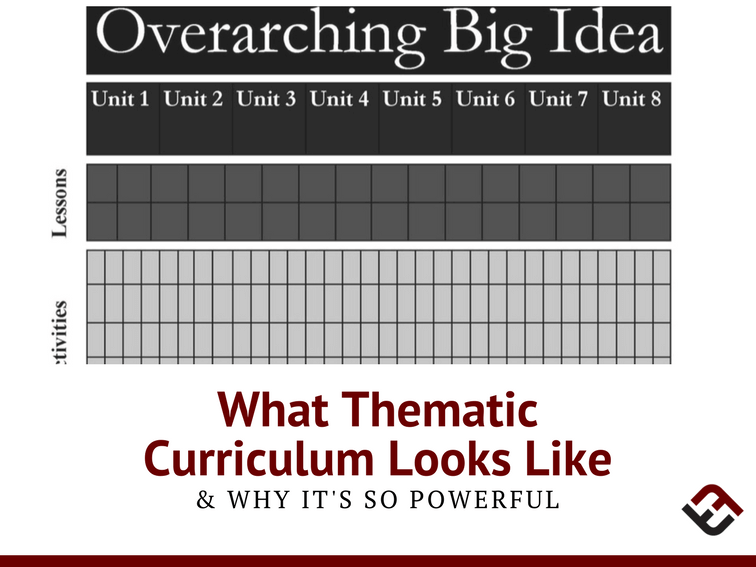
What’s A Thematic Unit? A Way To Unify What You Teach
by Terry Heick
What’s a thematic unit? A thematic unit is a way to unify lessons and activities with a ‘theme’–usually an open-ended concept often phrased as an essential question or even ‘big idea.’
First, some background.
Activities, Lessons, And Units In Curriculum
There are many ways to turn a huge pile of skills and ideas and academic standards into learning activities, the most common of which is the ‘unit.’
I’ve talked before of chloroforming the grand old unit. It’s not that there’s anything wrong with the unit, any more than there’s anything ‘wrong’ with an abacus or a chalkboard. I just wonder if we can’t do better.
Same with genre-based units. Genre-based units are a relatively common practice of anchoring a unit of instruction around a specific genre–a ‘poetry’ unit, the ‘novel’ unit, and so on.
This has proven quite popular in English-Language Arts and Literature classrooms, where it makes for nice and tidy planning–makes it easier to check the curricular boxes.
An evolution of the ‘genre-based unit’ is the thematic unit–a method of anchoring learning around thematic (often ‘essential’) questions that encourage open-ended questions, subjectivity, and enduring reflection while allowing educators to use a variety of genre and digital media in a single unit.
(Some questions might include, “How do we form and shape our identities?,” How does language influence the way we think, act, and perceive the world?” and so on).
In this way, a short story, a poem, a twitter stream, and a popular YouTube video can all contribute to the understanding of the unit’s theme and accompanying ‘big ideas’–ideas refracted through the prism of various learning taxonomies throughout an academic year.
The Benefits Of A Thematic Unit
This approach helps frame teacher and student thinking while offering a helpful ‘glue’ to bond all of the learning activities from August to May. In English-Language Arts, this might be “What should literature do?” or “How is our understanding of culture and society constructed through and by media?,” etc.
In short, you’re unifying everything you teach–skills, concepts, lessons, and more–under a single topic, theme, or, ideally, appropriately complex essential question–an overarching question or ‘big idea.’
In that way, every unit is built around advancing understanding of that question or idea. And if it’s done properly, this single idea will be one that cannot possibly be understood within a given unit.
Further, each individual unit and/or activity comes to depend on the others–both sequentially and at scale–to both ‘make sense’ and ultimately deepen student understanding.
If students aren’t revisiting old ideas, rethinking their perspectives, and transferring their understanding to new and unfamiliar circumstances, there a chance for mastery of any given academic content, much less long-standing, life-changing knowledge, is diminished.
And that simply can’t happen–or at least isn’t seamless or natural–with disconnected units and activities that don’t necessitate macro-thinking and sense-making.
Learning is an interactive process.
Learning happens at different paces for different reasons by different students.
Learning that is complex enough to challenge students will require multiple opportunities for students to acquire, much less master.
Curriculum, then, should be designed around these ideas.
In math, this could be a unit about the relationship between math and video games or architecture. In English Language Arts, it could about the language of protest and social protest. I need to provide more clarity and examples here. I’ll try to write more soon. In the mean, you can find some examples of essential questions.
What’s A Thematic Unit? A Way To Unify What You Teach
